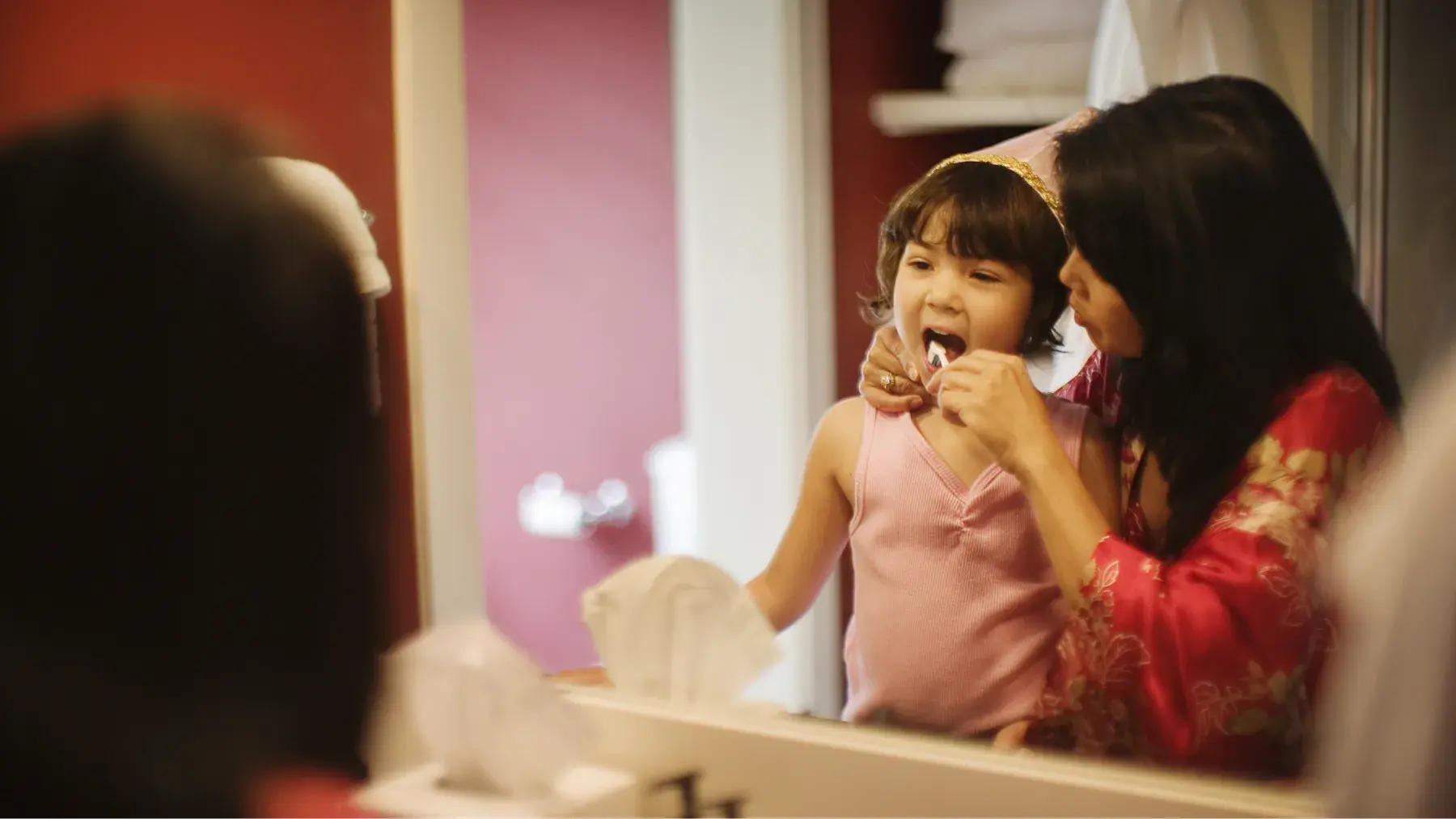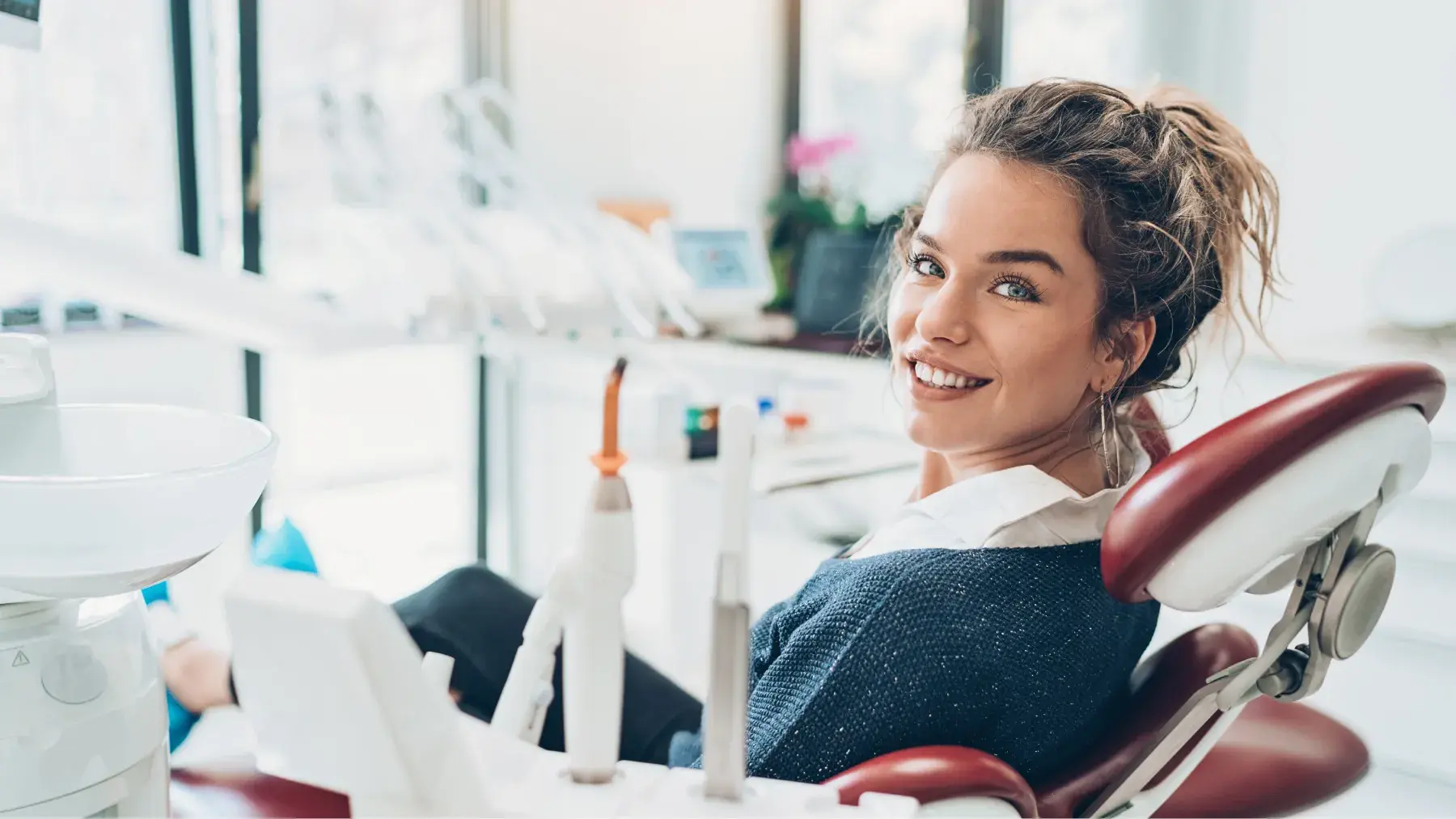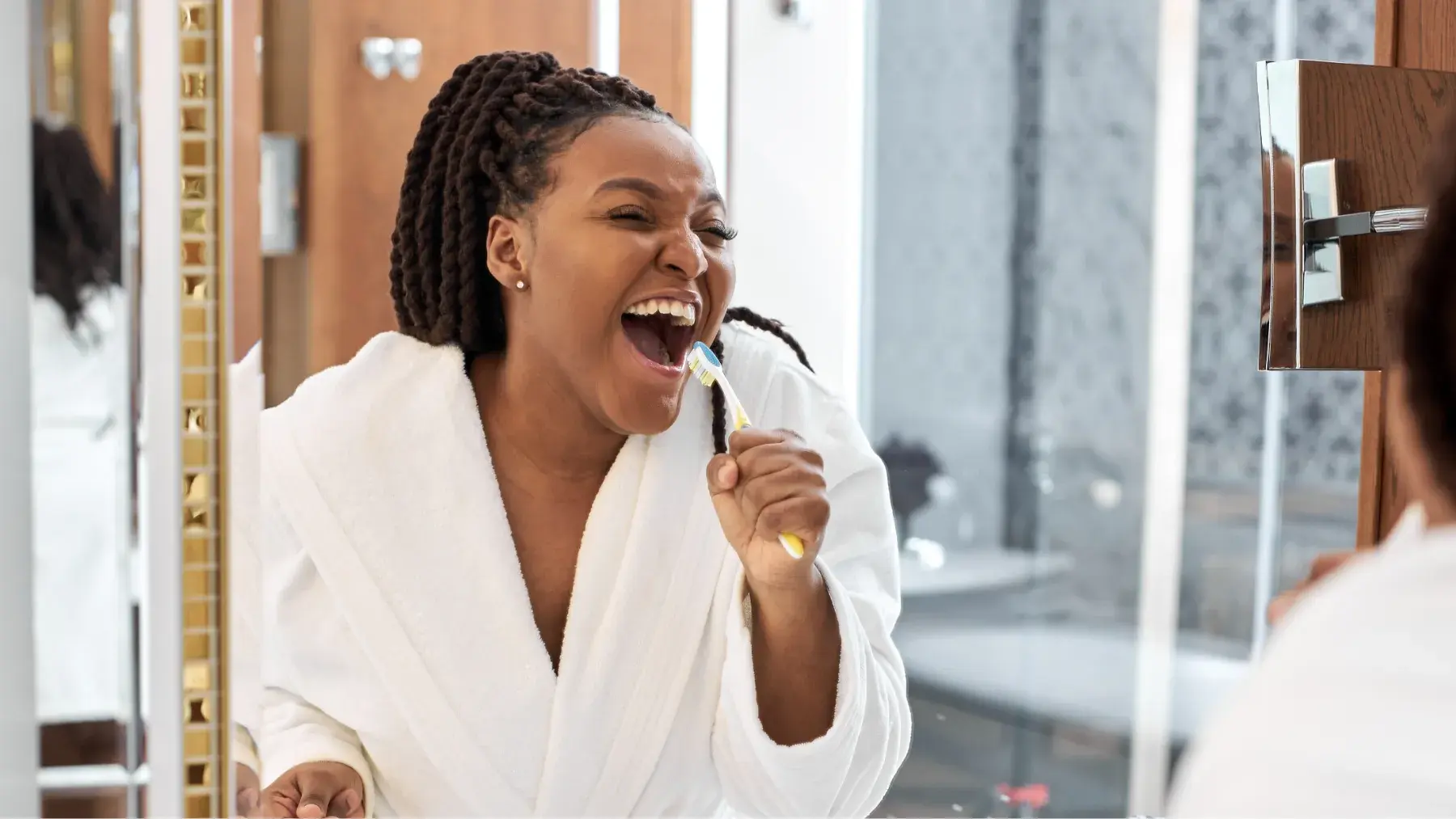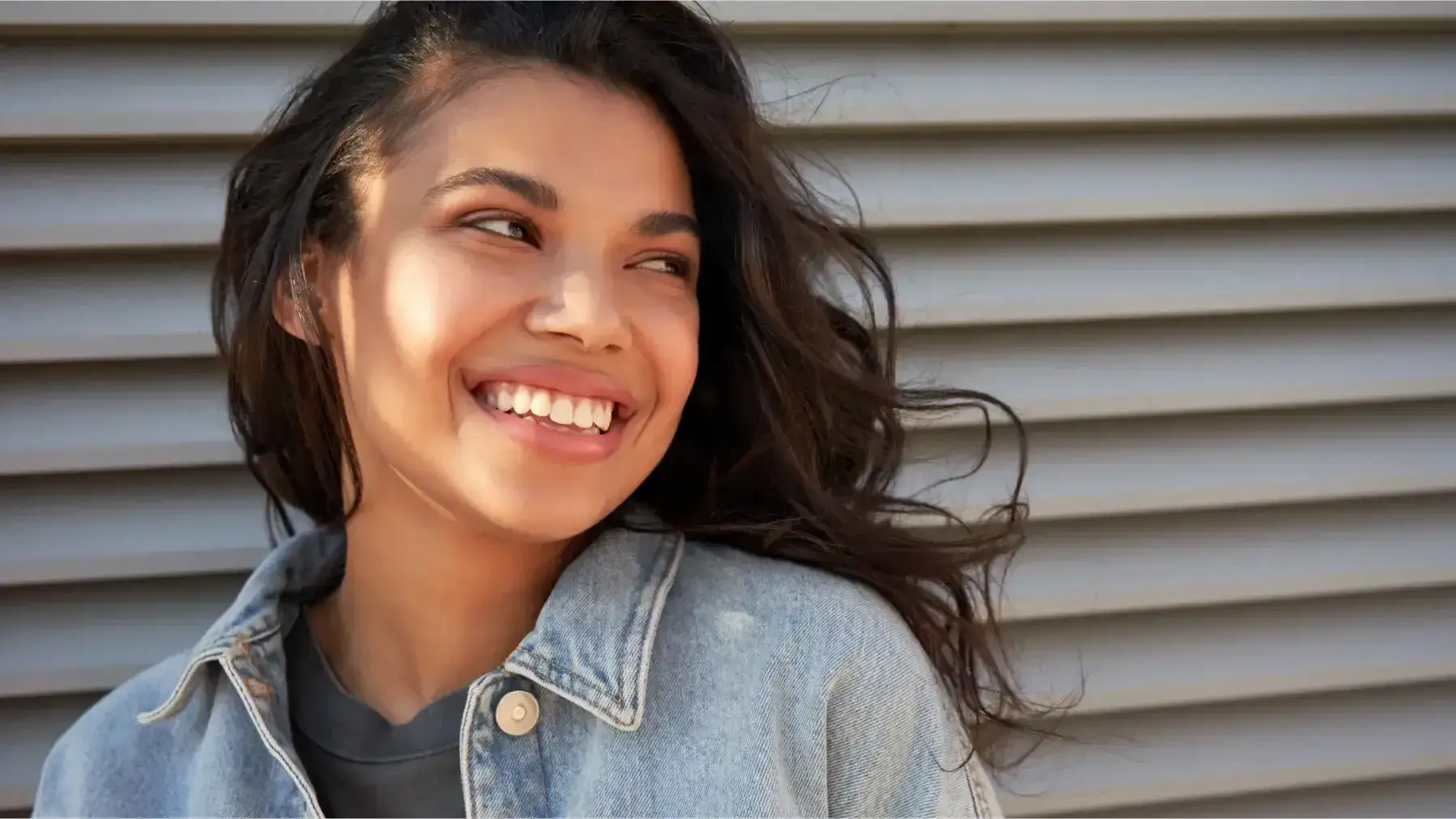Importance of Establishing an Oral Hygiene Routine for Babies, Toddlers and Kids
Most dental concerns are preventable with good oral hygiene. For kids who are young, parents need to intervene until the child gains better dexterity in their hands (think using a pencil to write their own name.) That means establishing a kids oral care routine from day one, during infancy.
Even if your toddler refuses to brush teeth on their own, parents can make the process a positive one to establish good oral habits at a young age. The earlier you encourage kids brushing teeth on their own, the more likely they’ll be to have a better oral hygiene routine into their teen and adult years.
How to Brush and Floss Teeth for Babies and Toddlers
Before your baby’s teeth erupt, clean their gums with a soft cloth after each feeding. As teeth begin to erupt, use a soft infant toothbrush to clean their teeth. Brush in a circular motion to clean each tooth and massage the gumlines. Use a rice-grain sized smear of fluoride toothpaste.
For children who are 6+ years old and are comfortable rinsing and spitting, you can begin to use a pea-sized amount of fluoride toothpaste and kids mouthwash twice a day. How long should kids brush their teeth? For two minutes at a time.
How Can I Brush My Toddler’s Teeth When They Refuse or Have a Tantrum?
Knowing how to floss children’s teeth when they’re less than willing can take a bit of trial and error. Here are a few tips to help:
Use a reward chart
Practice brushing a stuffed animal’s “teeth” for fun
Allow your child to choose their toothbrush
Change the flavor of toothpaste they use
Brush your teeth next to them in the mirror
Some dentists recommend having your child lie back in your lap and brushing quickly while their mouth is open, even if they are fussy. Since not brushing allows painful tooth decay to develop, it’s important to remember that this stage is temporary. If your child tends to bite down, consider using the handle of a second toothbrush as a prop on one side of their mouth while you brush the other.
Oral Care for Kids by Age and Development Stage
Infants and Toddlers
Brushing a toddler’s teeth will be up to the parent or caregiver for now. Use a rice-grain sized amount of fluoride toothpaste to clean all of the teeth at least twice a day. Floss between any teeth that are touching to clean the spaces a toothbrush won’t reach.
Preschoolers
When can a child start brushing teeth? Once children can write their name or tie their shoes, they can brush and floss independently, but parents should help with the brushing at least once a day to make sure all of their child’s teeth are cleaned well.
At this stage, children should be brushing twice a day with a pea-sized amount of fluoride toothpaste, flossing their teeth, and using kids fluoride mouthrinse at least once daily. Some preschoolers may also prefer to graduate to an electric toothbrush, which can be a good incentive for better (and longer) brushing.
Elementary and Older
Older children should continue brushing twice a day, followed by floss and fluoride mouthwash at least once a day. Encourage your child to communicate with you if anything is sore, sensitive, or bothers them when they clean their teeth. For snacks or mid-day meals at school, encourage them to rinse their mouth with water to remove leftover food particles.
Tips for Getting Kids to Brush, Floss, and Rinse with Mouthwash
Here are some popular tricks parents use to motivate their children to follow an oral hygiene routine which includes brushing, flossing, and rinsing with mouthwash.
1. Get Fancy, Fun Brushes and Kid-Friendly Rinse Flavors
Let your child pick out his or her own toothbrush and rinse at the store, as well as toothpaste. These days you can find all sorts of kid-friendly brushes in bright colors and covered with favorite movie and television-show characters. LISTERINE® TOTAL CARE Kids is available in three kid-friendly flavors and comes in bottles with fun characters from your children's favorite movies and television shows.
2. Take Turns
Decide who gets to go first and then take turns brushing your child’s teeth. Consider allowing them to brush, then following up behind them to see how they do. Or maybe they would rather you brush their teeth first, then they finish. Even brushing together in front of a mirror can encourage your child to brush their teeth more thoroughly.
3. Brush a Favorite Toy’s Teeth
Practice toothbrushing on a favorite toy (just pretend, of course.) This can make brushing kids teeth less intimidating. If you’re up for it, you could consider letting them brush your own teeth! Playing “dentist” at home can make oral care less intimidating and more fun for kids, whether it’s brushing and flossing at home or their next checkup.
4. Sing A Song
Play a fun game where you sing the song your child selects while they brush, floss and rinse. The only catch is they have to keep up with the routine the whole time. If they can, encourage them to hum along with their mouth full of bubbles (which is sure to prompt those precious little giggles). If your child is into sports, you can use a stopwatch instead of a song, and make it a competition to see if they can keep brushing until the stopwatch goes off.
5. Calendar Games
Reward them with an enticing prize, such as a trip to the zoo, movie, or a fun new toy. Turn it into a contest so that the length of time of consecutive brushing earns your child a bigger prize. Give your child a toy they really want after 14 days of twice-daily brushing and rinsing. Hang a calendar at your child's height in the bathroom and allow him to stick a gold star on each day he successfully brushes and rinses in the morning and at night.
6. Tell a Tooth Story
Explain why it is important to brush and make animated motions when describing the sugar bugs that can make holes in our teeth if we don't wash and rinse them away. Add fun characters like a pretend fairy princess who looks like a sparkling tooth and a made-up mean Mr. Bacteria bad guy. After you have told the story a few times, ask your child to tell the story some nights. Ask questions about the characters and ask your child what they sound like, encouraging them to add sound effect.
Kids Oral Care FAQ
At What Age Should I Start Brushing and Flossing My Child’s Teeth?
Brushing a toddler’s teeth begins during infancy before their teeth even erupt. Cleaning their gums after each feeding will help prepare children for having their teeth brushed and also limits the risk of infections like oral thrush. Once your child’s first tooth erupts, switch to a soft training toothbrush to clean their teeth and gums. At this stage, experts recommend using a rice-grain sized amount of toothpaste; as your child gets older and learns to rinse on their own, you can transition to a normal pea-sized amount.
When Can a Child Start Brushing Their Own Teeth?
As soon as they’re ready. Encourage your child to brush on their own twice a day for two minutes at a time. But a child should not be allowed to brush their teeth independently (without any adult help) until they can write their name or tie their shoes. Parents will need to go back and re-brush any areas that require attention. Children should also be supervised when using fluoride toothpaste or kids mouthwash.
When Should Kids Start Flossing Their Teeth?
Flossing is essential in preventing early childhood tooth decay. Brushing does not clean between teeth, so flossing is an important daily ritual as soon as your child has more than one or two teeth. Especially if the teeth are visibly touching side-by-side. Use a disposable flosser or traditional flossing string to clean between all teeth at least once a day. Children can floss their own teeth with adult help or begin flossing independently by the time they’re about 7 or 8 years old.
When Should a Child Start Using Mouthwash?
Age-appropriate mouthwash should be supervised from 6-12 years of age until the child is showing they are comfortable rinsing and swishing. Fluoride mouthwash will help remineralize tooth enamel when applied to clean tooth surfaces after brushing and flossing. Additionally, they can transition from a rice-grain amount of fluoride toothpaste to a pea-sized dose to ensure adequate fluoride levels across their tooth enamel.
What if My Child Swallows Mouthwash?
Accidentally swallowing a small amount of mouthwash or toothpaste can happen from time to time. It’s a good idea to practice with water first, until your child is old enough to use something like mouthwash. If your child does accidentally swallow mouthwash (or toothpaste,) reach out to a medical professional or contact poison control for advice.
Benefits of Using LISTERINE® TOTAL CARE Kids Mouthwash
Using a kids mouthwash that tints food particles can help your child be more thorough as they independently brush and floss their own teeth. This encourages better brushing habits and helps boost good oral hygiene habits at a young age while teeth are still developing.
If you’re trying to figure out how to get a toddler to brush teeth or encourage your child to floss more, adding a mouthwash when they are over 6 years of age to their home care routine can provide better protection against preventable conditions like cavities and gingivitis. It can also help your family reduce the chances of unexpected or painful dental emergencies that can be prevented with good oral hygiene habits.



